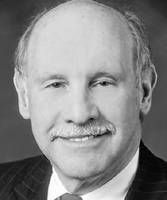Click here to subscribe today or Login.
There seems to be a disconnect between the shortage of long-haul truck drivers and the number of people who are currently unemployed. Even in a period of rapid job growth, a steady job that requires only a high school education, while providing a relatively good salary and benefits, should attract workers. Long-distance truck drivers earn between $50,000 and $60,000 annually and enjoy reasonable benefits.
Long-haul truck driving is not an easy job. It necessitates days and sometimes weeks on the road, separation from family and friends and a lifestyle that does not lend itself to good health. It also requires a commercial driver’s license, and training that can cost as much as $5,000. However, community colleges offer courses and many transport companies pay for the courses in return for an agreement to drive for the company for several years. Still, the shortage of drivers is such that the American Transportation Research Institute, a trade association for the industry, ranked driver supply among its three top concerns.
Of course, the traditional answer to the labor shortage is raising pay. However, even that does not seem to be working well. The Wall Street Journal reported that J.B. Hunt Transport Services, one of the country’s largest trucking firms, raised driver pay but saw no commensurate increase in the number of eligible applicants. Warner Enterprise in Omaha, Neb., boosted wages 15 percent with little effect in the number of drivers.
Trucking firms desiring answers to driver shortages are looking to technology. In what might otherwise appear to be an odd workplace partnership, electrical engineers are teaming with high school-educated truck drivers in a race to provide the industry with an answer to the problem of too few drivers. New technology allows artificial intelligence, imbedded in trucks, to potentially operate hundreds of driverless 18-wheelers. The rapid advance in autonomous vehicles coupled with automatic transmissions can reduce dependence on drivers in the cabs of the country’s 2 million 18-wheelers.
The trucking industry is ripe to the influx of autonomous vehicles. Long-distance truck drivers spend much of their time on interstates and other open roads. This reduces some of the complexity of algorithms that have somewhat stymied self-driving vehicles in cities.
The business model is a simple one. Autonomous-driven trucks would replace most long-distance drivers. Truck drivers would only be needed in urban areas where it is particularly difficult to maneuver 18-wheelers. Local drivers would pick up trucks on city outskirts and drive them to the final locations much as ocean-going ships use pilots today to help them dock. Eventually, artificial intelligence may completely replace truck drivers.
This is not some “Jetsons”-style fantasy. The international consulting firm McKinsey and Company’s recent 40-page report projects that by 2025 at least one in every three heavy trucks will not need full-time drivers. The irony here is that while trucking firms can’t find enough qualified drives today, they may, in several years, be laying off drivers.
The trucking industry is a microcosm of an economy that is being rapidly impacted by automation. Algorithms are replacing all kinds of workers. Will the impact on individuals and the economy from these displacements cause further dislocation and alienation in the country? Will one of the last reasonably well-paying jobs open to high school graduates go the way of the blacksmith? These are key questions that policymakers in and out of Washington will have to deal with and they are not insignificant ones.
Recently, Google established a $100 million grant fund to award those engaged in providing innovative ways to retrain displaced workers by upgrading their technological skills and place them in growing industries. This kind of thoughtful corporate philanthropy, coupled with innovative policies from state and local governments, may offset a trend in industries where workers, who were once in short supply, no longer have jobs at all.





